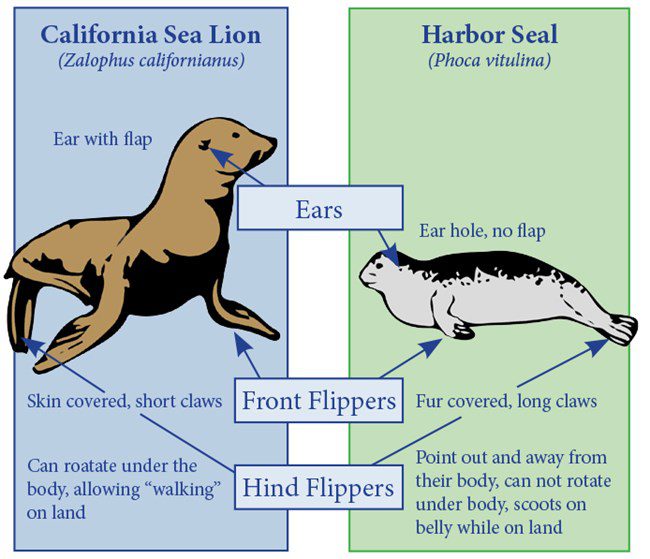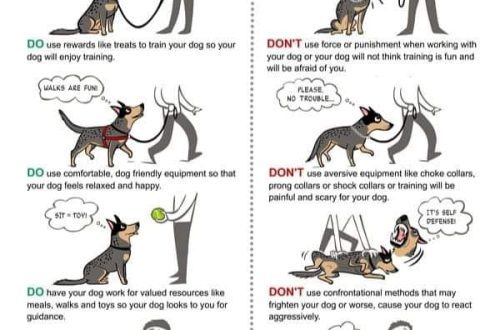
Seals under the skin of a dog: common types and everything you need to know
If seals are felt under the skin of the dog during palpation, there is no need to panic – there are many possible reasons for the appearance of bumps in a pet. Although malignant tumors occur in dogs, many of the formations that are palpable on the skin of a pet can be treated. A bump or lump can be, for example, an inflamed hair follicle.
The most important thing to do is to keep an eye on any lumps on your dog’s skin and report them to your veterinarian. He will be able to determine if treatment is needed.
Contents
How to track the appearance of seals in a dog
Skin tumors are the most common type of neoplasm in dogs, according to the Merck Veterinary Manual. Regular examination of the dog’s skin is one of the most important elements of caring for its health. You need to examine the dog weekly from the tip of the nose to the tip of the tail. Be sure to look into places that are not in plain sight, such as between the toes, under the tail, and even in the dog’s mouth if he allows it. Most likely, the dog will even like these extra strokes.
Having felt the seal on the dog, you must definitely mark this place, take a couple of pictures. Bumps and lumps in dogs can change over time, so keeping a note of their position and size can help your veterinarian monitor your pet more effectively.
Diagnosis of compaction in a dog
“What to do if the dog has a ball under the skin, a seal?” Pet owners often ask this question. The best thing to do in this case is to make an appointment with a veterinarian. You can find a lot of recommendations on the Internet, but there is also a risk of becoming a hostage to information or being completely misinformed, so it is better to immediately consult a doctor. Even if the dog is scheduled for a preventive appointment in a few months, you still shouldn’t postpone it, because problems can also begin with benign formations.
The veterinarian will need to take a series of tests to accurately determine the nature of the lump. He may recommend a fine needle aspiration biopsy, a cytological examination, one of the least invasive procedures for diagnosing neoplasms. To do this, use a small needle to collect cells. The cells are then placed on glass slides and stained for microscopic analysis. Depending on the type of neoplasm, the veterinarian will be able to quickly diagnose it. Otherwise, he will send the samples to the laboratory for analysis by a specialist.
Although a fine needle aspiration biopsy is usually sufficient, for certain types of neoplasms, a veterinarian may perform an incisional biopsy with tissue excision with a scalpel or forceps. This is an invasive procedure that may require the use of sedatives or anesthesia. However, the biopsy is usually done at a veterinary clinic and the dog can return home the same day.
Common Types of Lumps in Dogs
Bumps or lumps can often be divided into two categories: neoplasms and skin diseases.
Skin neoplasms
Skin diseases are pathologies of the skin tissue (non-cancerous), protruding above the surface of the surrounding skin. The most common types of such diseases in dogs:
- Abscesses. These are seals that form as a result of infection of the bite site, injury, or a foreign object entering the skin. They are often painful and may contain large amounts of blood and pus with the possibility of rupture.
- Apocrine cysts. These cysts are formed as a result of blockage of the skin glands and resemble human acne.
- Hematomas. They occur as a result of the accumulation of blood under the skin after an injury. A hematoma can be painful for the animal.
- Reaction at the injection site. After the injection, a small knot may form under the dog’s skin. These bumps can be painful, but often go away on their own within a few days or weeks.
- Urticaria and other allergic reactions. Urticaria is an allergic reaction that manifests itself in the form of itching and swelling of the skin. Various types of allergic reactions can lead to the formation of other seals.
Types of Neoplasms (Tumors) of the Skin in Dogs
Neoplasm or swelling is one of the scariest words pet owners can hear. However, not all tumors are malignant, and even if they are, this does not mean that they cannot be treated. Simply put, a tumor is a collection of abnormal cells in a tissue. Tumors are of the following types:
- Histiocytomas. These small, hard, dome-shaped, benign growths often appear on the head, ears, or paws of young dogs. In most cases, they disappear even without treatment.
- Lipomas. These neoplasms are most common in overweight dogs. These are benign tumors made up of soft and smooth clumps of fat cells that can grow to be very large. Most often they are found in the chest, abdomen and front paws.
- Hyperplasia of the sebaceous glands. This type of tumor is caused by the rapid growth of glands that secrete sebum, an oily substance that lubricates the dog’s skin. These benign wart-like tumors are often found on the paws, trunk, or eyelids of the animal.
- Malignant tumors of the skin. They look like noticeable lumps or non-healing sores on the skin. Mastocytomas are the most common type of skin cancer. Their early diagnosis is a key factor in maintaining the health of the pet.
Can swelling or hardening of the skin be cured?
After the diagnosis is made, the veterinarian will offer treatment options. Even if a dog is diagnosed with a malignant neoplasm, treatment can give excellent results. Active medical intervention at an early stage can help with this. Proper nutrition helps in the treatment and prevention of skin pathologies. The right balance of nutrients in the food can help soothe irritation and keep your dog’s skin and coat healthy overall.
The key to a positive outcome is early detection of the problem and treatment. Therefore, it is important to photograph a raised or flat lump on the dog’s skin and visit a veterinarian as soon as possible for diagnosis. This is the easiest way to help your pet live a long and healthy life.





